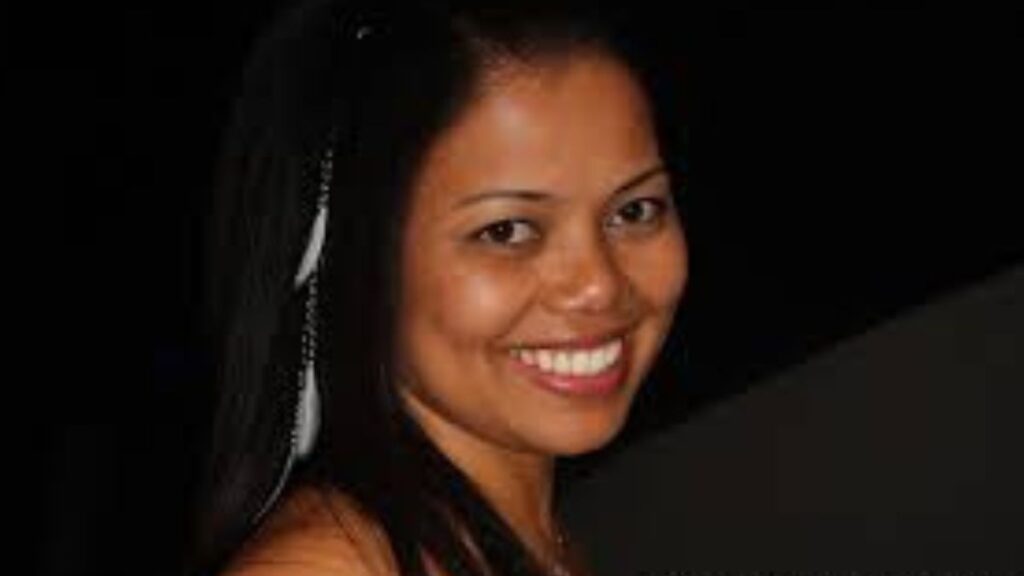Gabby Pitso wasn’t born under a neon sign proclaiming “Future Icon Here.” She arrived in this world in a modest hospital on a soggy April morning, her parents half-convinced she’d be a dentist. Yet even as a toddler, Gabby was less interested in molars and more transfixed by movement—her mother’s gentle sway during lullabies, the way sunlight threaded through stained-glass windows at church. Fast-forward three decades and Gabby Pitso stands as a restless creative force: dancer, choreographer, cultural provocateur, and the unlikely architect of a new artistic grammar that marries traditional storytelling with cutting-edge performance.
Early Harmonies and First Steps
Gabrielle “Gabby” Pitso grew up in Port Elizabeth, South Africa, the middle child in a constellation of five siblings. Her father, Thabo, managed a small automotive shop on the beachfront boulevard; her mother, Naledi, taught English at the local high school. Between engines and essays, the Pitso household buzzed with a curious energy—books piled high next to drumkits, dusty boots by the door alongside ballet slippers.
From age four, Gabby’s shadow was nearly inseparable from her grandmother’s sandals. Grandma Bongi, a retired church choir director, introduced her granddaughter to call-and-response hymns and improvised handclaps: “Music,” she’d say, “is the language God forgot to translate.” By kindergarten, Gabby could tap out polyrhythms on her desk. By ten, she was sneaking into after-school dance rehearsals at the community center.
What set her apart wasn’t raw talent alone; it was curiosity. At eight, she dissected a cassette tape to see how it worked. At twelve, she read every autobiography in the public library—Muhammad Ali, Maya Angelou, Picasso—absorbing not just their feats, but their voices, their cadences. Her own artistic voice began to emerge: bold, hungry, steeped in local tradition but refusing to be confined by it.
Education as Exploration
In high school, Gabby Pitso’s reputation spread beyond her family’s living room. She competed in national dance competitions, placing in the top ten for contemporary solo—no small feat for a girl who’d taught herself to choreograph from YouTube tutorials. But she saw even those accolades as checkpoints, not destinations.
At eighteen, she won a scholarship to the University of Cape Town’s arts program. There, she majored in Dance and Performance Studies while auditing Philosophy and African History courses. Late nights in the dorm lounge found her and classmates debating Jean-Paul Sartre, dissecting Jacob Zuma’s speeches, planning guerrilla flash mobs across campus lawn. Her roommates called her “The Professor” for the way she wove academic theory into every conversation—yet she moved with a dancer’s grace, turning theory into motion.
It was in Cape Town that Gabby first collaborated with digital media artists. Inspired by drone footage and projection mapping she’d glimpsed at a festival in Stellenbosch, she devised a piece called Echoes of Umsonto—a multi-sensory performance combining live dance, electronic soundscapes, and 3D projections of township rooftops. The show sold out three nights in a row. Critics praised her “fearless fusion of the ancestral and the avant-garde”—words that would recur throughout her career.
Choreographing the New World
Post-graduation, Gabby moved to Johannesburg on a wing and a prayer. The city’s thrum—its traffic-clogged highways, neon-lit nightclubs, splintered inequality—both exhilarated and haunted her. She took odd jobs as a barista, a ride-share driver, even a street-art tour guide, sketching out movements on subway benches between customers.
Her breakthrough came in 2018 with Concrete Poetry, a dance-theater piece staged in an abandoned warehouse in New Doornfontein. Audience members wore wireless headphones; performers darted through shafts of light, silent to onlookers but soaring through a custom-composed score in each listener’s ear. The interplay of private and public, the tension between silence and sound, echoed Johannesburg’s own contradictions.
Concrete Poetry toured Europe and North America, introducing audiences unfamiliar with South Africa’s post-apartheid complexities to a new kind of bodily storytelling—one that refused to sanitize history. Reviewers in The Guardian hailed Pitso as “a transcontinental bridge-builder,” while GQ dubbed her “the choreographer reinventing cool.”
Signature Works and Themes
Over the next five years, Gabby Pitso produced a string of memorable works:
-
“Nkosi’s Lament” (2019): A solo piece reflecting on the Marikana Massacre, interlacing news footage projections with a solo dancer’s slow, methodical ritual.
-
“Shebeen Sonata” (2020): Set in a re-created township bar, it offered a communal space for audience participation—dancing, chanting, storytelling—blurring the line between spectator and performer.
-
“Digital Ubuntu” (2021): A VR installation pairing diaspora stories from Johannesburg, Lagos, and London, exploring how home evolves when it’s spread across screens and geographies.
Across these works, common threads emerge: a fascination with memory as movement; a refusal to separate art from social justice; and an insistence that technology serve emotion, not supersede it.
The Pitso Aesthetic: “Embodied Narrative”
What really distinguishes Gabby Pitso is her concept of “Embodied Narrative.” Borrowing from oral storytelling traditions, she treats the body not as an ornament but as the principal text. Gestures become sentences; group formations enact dialogues; silence—whether enforced or celebrated—carries its own volume.
In a 2022 interview, she explained:
“We live in a world drowning in words. I want people to feel story before they can name it. When you watch a Pitso piece, you should hear the unspoken.”
This philosophy extends beyond performance into the way she staffs her productions. Pitso insists on collaborative creation: dancers, musicians, set designers, programmers—all are co-authors. Rehearsals often resemble brainstorming sessions, with movement improvisations captured by motion-capture suits and later rendered as digital sketches.
Personal Philosophy: “Rooted Flight”
If “Embodied Narrative” is her method, “Rooted Flight” is Gabby’s motto. It speaks to her dual allegiance: to her African heritage and to boundless experimentation. She maintains a small farm on the outskirts of Port Elizabeth where she tends indigenous plants and hosts writers’ retreats. On the farm’s bright mornings, she practices traditional Xhosa dance with her grandmother’s old choir companions; by dusk, she’s back in Johannesburg, experimenting with AI-driven light choreography.
“Rooted Flight isn’t a contradiction,” she says. “It’s a promise: I’ll never abandon where I come from, even as I explore where I might go.”
Influence Beyond the Stage
By 2023, Gabby Pitso’s imprint extended far beyond theaters. She partnered with a South African tech startup to develop an app that translates sign language into improvised dance for hearing-impaired youth. She lectured at Stanford’s d.school on “Designing for Emotion.” She co-authored a photo essay in National Geographic documenting water-scarce communities in the Karoo through movement and still photography.
Her TED Talk, “Dancing Data,” went viral: she demonstrated how algorithmic bias shows up in choreography software and offered choreography as a corrective—inviting bodies to resist reductive patterns. Within months, movement-based AI research labs sprouted from London to Seoul, citing her as an early visionary.
Challenges and Controversies
No great artist’s path is free of friction. In 2022, Pitso faced criticism over her Digital Ubuntu installation, accused by some Lagos artists of leaning too heavily on Nigerian narratives without adequately involving local performers. She responded by organizing a six-week residency in Lagos, inviting 20 artists to co-create a follow-up piece, Lagos Pulse, which premiered in 2023 to unanimous acclaim.
She’s also been outspoken about funding inequities. In interviews, she’s called out international grants bodies for favoring Western-framed projects, and she co-founded the Ubuntu Arts Collective to redistribute resources to grassroots African arts initiatives.
A Day in the Life of Gabby Pitso
A typical day for Gabby defies “typical.” She might start before dawn, meditating to the sounds of coastal winds. Breakfast is scrambled eggs with spinach from her garden. Then a two-hour session with her core ensemble—improvisations captured by Kinect sensors. Mid-morning, she holds office hours for emerging artists via Zoom, offering feedback on pitches. Lunch is often street food—bunny chow or falafel wraps—grabbed on the go.
Afternoons alternate between high-tech lab time (tweaking projection-mapping code) and community workshops in Alexandra township. By evening, she retreats to her studio, where candles flicker as she pores over new music compositions. Nights end with spontaneous jam sessions: she on her grandmother’s tambourine, friends on drums, neighbors drifting in.
Legacy in the Making
At thirty-two, Gabby Pitso’s star is still ascending. Yet even now, hints of her legacy emerge. In Cape Town, a youth dance collective cites her as their founding muse. In cyberspace, fan-made VR reconstructions of her performances have thousands of followers. In academic circles, her articles on movement ethics are assigned in cultural studies courses worldwide.
Above all, her greatest achievement may be intangible: shifting how audiences think about dance. She’s convinced us that movement can be as conceptually rigorous as any essay, that our bodies carry histories as potent as any archive. She’s bridged the analog and the digital, the local and the global, the past and the not-yet-born.
Looking Forward: The Next Frontier
What’s next for Gabby Pitso? Rumor has it she’s collaborating with a NASA-funded artist residency to develop zero-gravity choreography. She’s exploring holographic theater in partnership with a Japanese robotics firm. She’s writing a novel about memory, displacement, and the language of stars.
But if her past is any guide, she’ll do it in her own way: rooted in the soil of her upbringing, leaping boldly into uncharted skies. Because for Gabby Pitso, every performance is a question: “What if movement could change how we understand ourselves?” And every answer unspools in sinew and light, laughter and longing—yet another chapter in a story that refuses to be contained.






